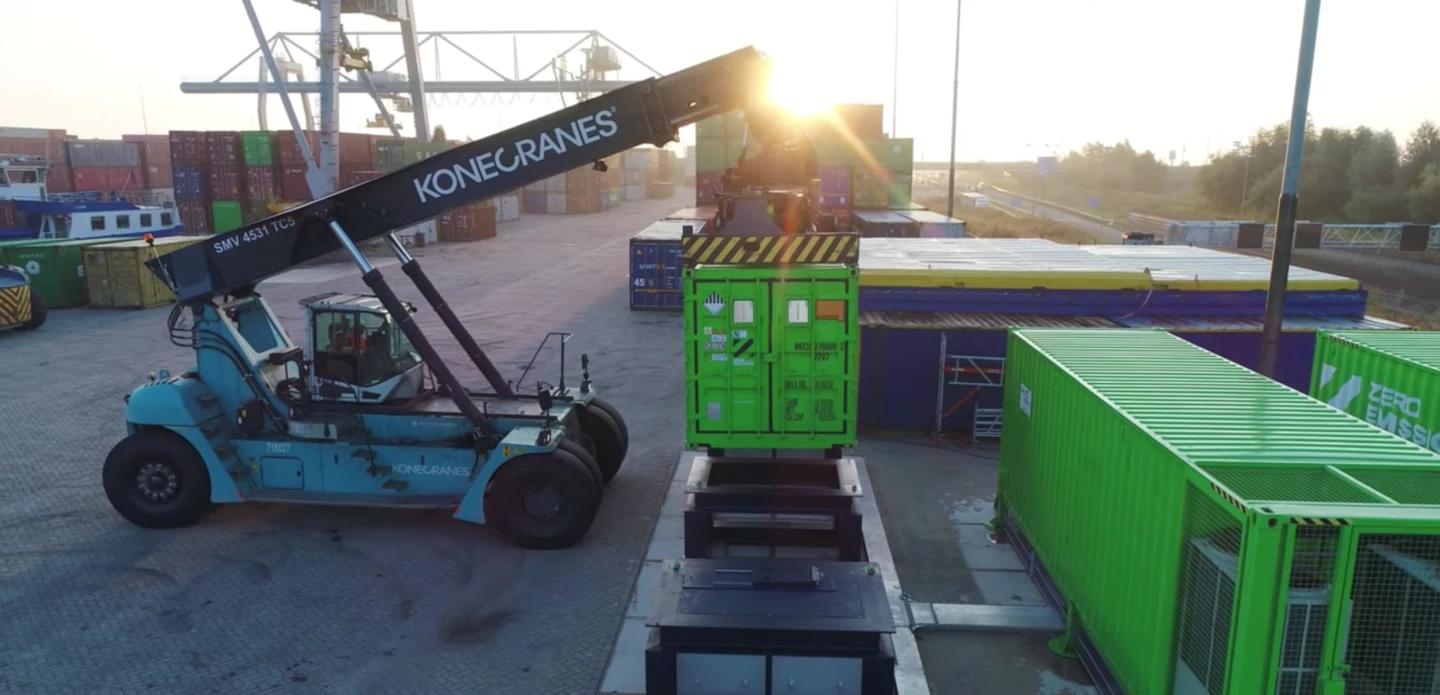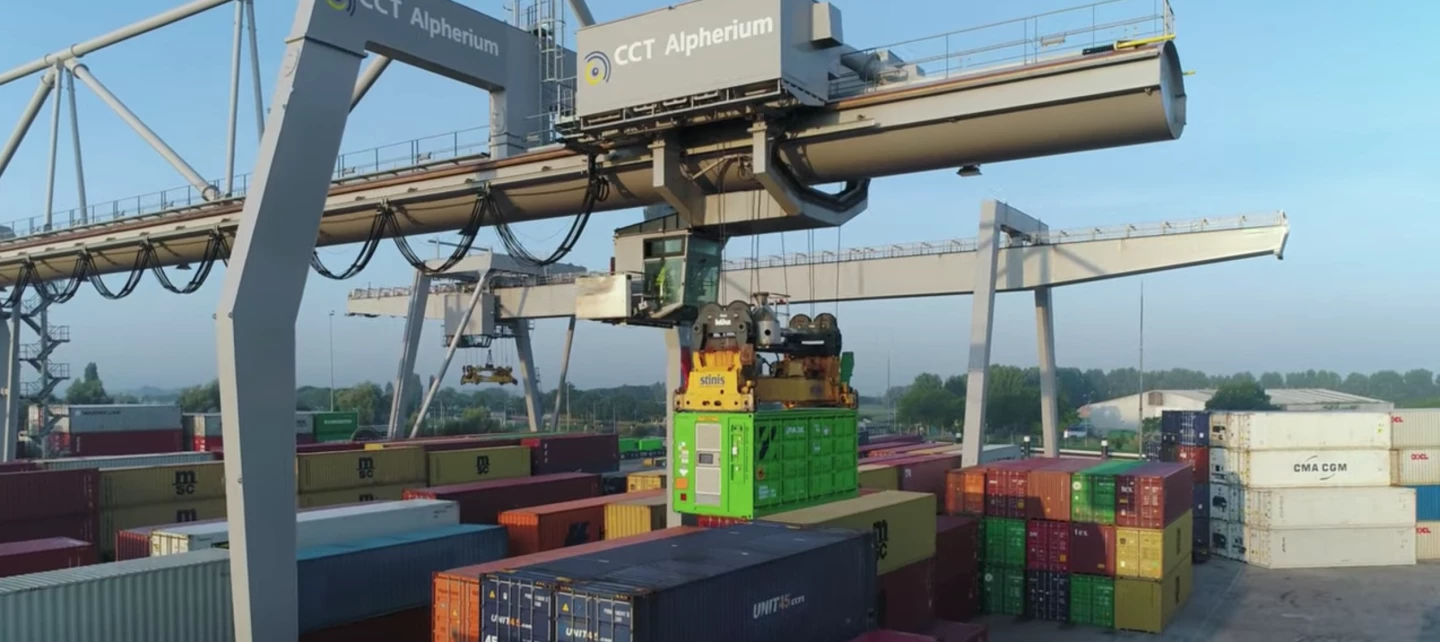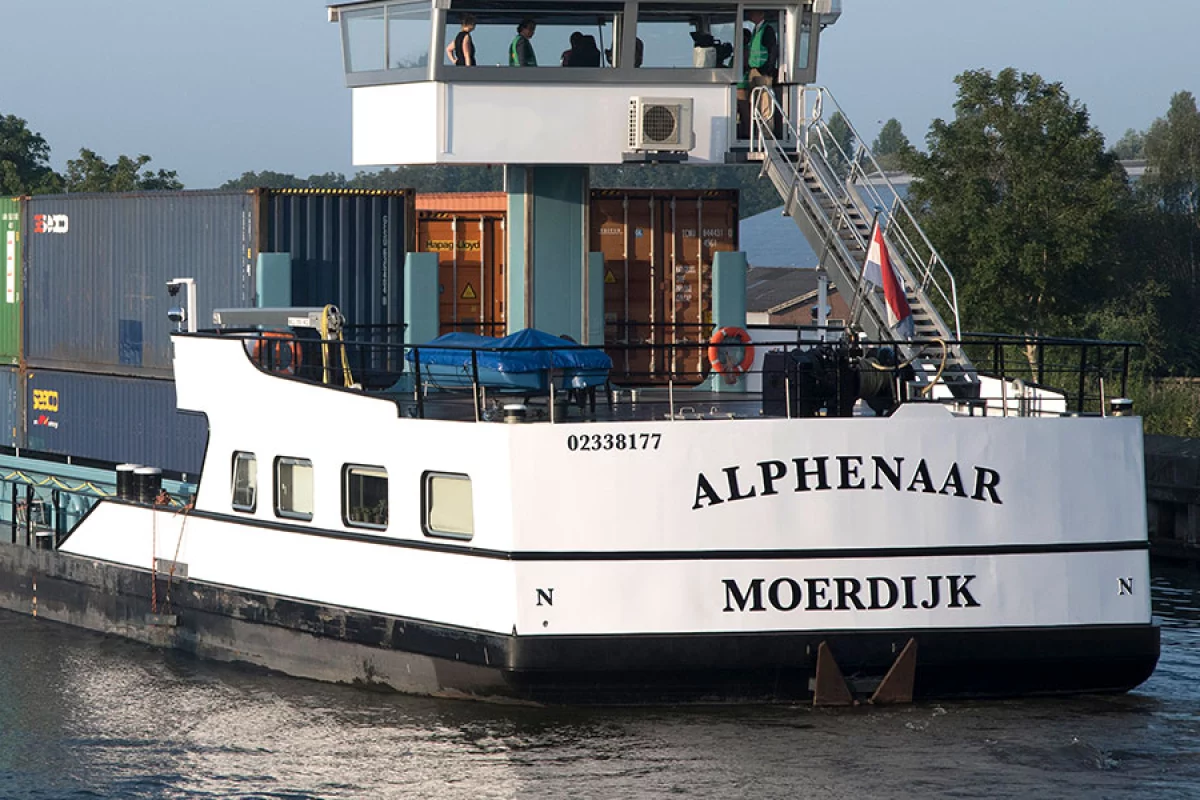Large container ships that carry goods all over the world are massive sources of pollution, and we've seen some interesting ideas around how to curtail their emissions, such as massive sails and hydrogen powertrains. One Dutch company is turning this type of thinking inward, deploying an innovative battery-swapping container ship on the country's inland shipping routes to take a bite out of the sector's sizable carbon emissions.
With thousands of kilometers of navigable waterways and Europe's largest container port in the city of Rotterdam, inland shipping plays a big part in the carbon dioxide emissions of the Netherlands, accounting for five percent overall according to Zero Emissions Services (ZES). The company aims to make these operations more sustainable by offering an alternative to the diesel-powered container ships that frequent these routes with something it calls the ZES energy system.
At the heart of this are standard 20-ft (6-m) shipping containers that are repurposed as energy packs, each equipped with 45 lithium-ion battery modules that total 2 MWh apiece, which is around the same capacity as 36 electric cars. These bear some resemblance to battery modules developed by Maersk that also pack into standard containers to help improve the efficiency of vessels on international voyages, though, as its name suggests, Zero Emissions Services is aiming to drive the emissions of its ships entirely down to zero.

Its so-called ZESpacks act as interchangeable batteries that can be dropped into outfitted container ships to power them on their trips, and swapped out for fully charged ones at an exchange station in as little as 15 minutes. This vision has been put into practice for the first time this week, with ZES's solution put to work transporting beer for Heineken on a customized ship called the Alphenaar.
The vessel has been fitted out for the job over the past few months, which involved the addition of standard plug connections that allow them to hook up and draw power from the ZES packs. Sea trials then took place in August, before the Alphenaar set off on September 6 from the city of Alphen aan den Rijn for the village of Moerdijk, around 60 km (37 miles) away, with Heineken's payload onboard.
"In addition to directly contributing to the realization of emission-free inland shipping, ZES is setting a standard that accelerates the transition to emission-free inland shipping," says Willem Dedden, CEO of ZES. "We are laying the foundation with our ZESpack and a standard connector."

ZES has signed a 10-year deal with Heineken to help ship its beer around the Netherlands, and in the near term plans to expand its operations to include eight vessels, 14 ZESpacks and eight loading stations, which can charge two packs in 2.5 hours and also be used to stabilize the electricity grid. ZES says it has also future-proofed its technology to allow the packs to one day work with other sources of energy, such as hydrogen or even ammonia.
Further down the track, the company aims to service 30 shipping routes by 2030, and 40 by the year 2050. By that stage, it aims to have a fleet of 400 vessels in action, swapping up to 650 ZESpacks at 20 docking stations dotted around the country.
Source: Zero Emissions Services






